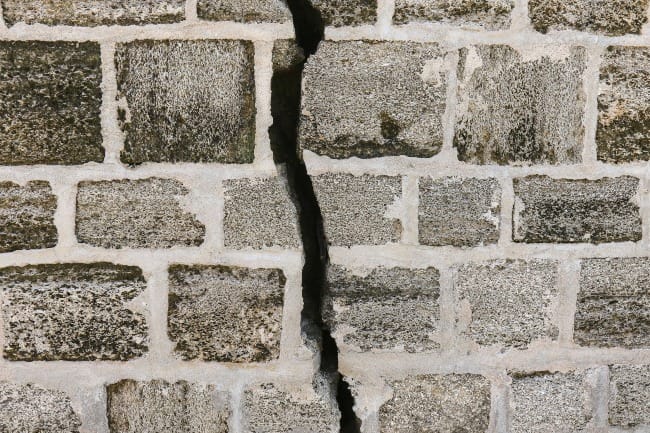I am grateful for the guest writers who shared their journeys of ecological discipleship with us over the past 8 weeks. For the next two months, I will be focusing on a simple thesis, that the Bible is thoroughly ecological in its overarching story and within its diverse books and genres. Both the Hebrew Scriptures and the New Testament speak of, and to, a world that is deeply interconnected and interdependent, a world in which the personal, social, ecological, cosmic, and divine dimensions of life are woven together into a dynamic and seamless whole called creation. We need to see how much the woven world of the Bible describes the actual world we inhabit, and allow it to speak to us as we confront our current ecological crisis.
This does not mean that the Bible is univocal – there are multiple voices and perspectives present, both in the authors behind the various books and in the characters, stories, and ideas that inhabit them. Some texts will speak more clearly to us than others. That said, we will only discover what we need to hear today by reforming the cultural and theological lenses that have reduced the Word of God to, among other things, a spiritual devotional, political manifesto, self-help manual, repository of propositional truths, or pathway to personal salvation.
This introductory post will offer a few thoughts on how those of us formed by the culture and theology of the Western worldview lost our ability to see the full vision of Scripture, what is enabling us to recover our sight, and what you can do to refocus your lenses. Subsequent weeks will focus on familiar texts that yield surprising gifts when read with ecological lenses. Come along and discover, as I have, a living word that invites us into deeper relationship with God, one another, and the more-than-human creation, a word that speaks to us from Genesis to Revelation and calls us to embrace this blessed yet broken world with the divine love that is making all things new.
Do You See What I See?
Let’s begin with a summary of the Bible’s overarching story. If we read Genesis 1-3 carefully, we cannot help but notice that God creates a world that is thoroughly interconnected and interdependent – the only word to describe the relationships between the cosmic and terrestrial bodies and forces that come into being and make life possible is ecological. The movement of creation is toward increasing complexity, diversity, and harmony. Humans beings come into the story as God’s creaturely agents to care for and further God’s gift of ecological richness. The rest of the story focuses primarily on humanity’s struggle to accept and perform this role, and God’s patient, gracious, elegant and creative interventions to reconcile these relationships and set things right. The story reaches its climactic moment in Jesus, and points us to a future that fulfills and surpasses the vision of Genesis – a “new” creation that unites the heavens and the earth in a new way. This is not the story that is told in most Christian traditions and local churches – biblical scholar J. Richard Middleton captures this disconnect well:
The holistic vision of God’s intent to renew or redeem creation is perhaps the Bible’s best-kept secret, typically unknown to most church members and even to many clergy, no matter what their theological stripe.
How have we not seen it? At the heart of it is an unneccesary split.

I Once Was Blind...
The Western theological tradition (Catholic and Protestant) has historically separated creation from redemption. In other words, creation has been seen as the work of God to create and sustain the physical universe, while redemption has been understood as the spiritual work of God in Christ to save humanity. With this framework, the non-human creation, and often the physical dimension of human life as well, is reduced to secondary status. This theological prioritizing of the spiritual over the physical has been strengthened by Western philosophy’s similar tendency to prioritize mind/thinking over physical life rooted in our bodies.
Think of all the ways we have been taught, in church, school, and popular culture, to regard our physical body as a tempting, destructive force to be controlled, a limitation to be overcome, or a temporary home for our immaterial soul that will ultimately be discarded for a higher, disembodied, “spiritual” existence.
This is in direct contradiction to the Scriptural story summarized above, but it is rooted so deeply in Western consciousness that it can be hard to see anything else. But there are forces and voices at work helping us refocus.

...But Now I See
The ecological harm we are doing has become so clear over the last few decades that it is virtually impossible to ignore. This has forced followers of Jesus to go to Scripture with openness to how the Bible might correct, guide, and shape us in the midst of a changing planet. And we are rediscovering the bigger story summarized above - Middleton’s assessment of the Bible’s “best-kept secret” is increasingly inaccurate. We are also listening anew to texts like Jeremiah 4:23-26, which describes the results of Israel’s disobedience and violence as a kind of de-creation. Read it below and think about air pollution, mountain-top mining removal, species extinction, extended droughts, and abandoned shoreline communities.
I looked at the earth,
and it was formless and empty;
and at the heavens,
and their light was gone.
I looked at the mountains,
and they were quaking;
all the hills were swaying.
I looked, and there were no people;
every bird in the sky had flown away.
I looked, and the fruitful land was a desert;
all its towns lay in ruins
before the Lord, before his fierce anger.
We are noticing passages like Job 12:7-9, which invites us to become students of our fellow creatures, and the earth itself, to learn the ways and wisdom of God. Read it and reflect on the explosion of ecological knowledge and wisdom that has come from observing creation at work.
But ask the animals, and they will teach you,
or the birds in the sky, and they will tell you;
or speak to the earth, and it will teach you,
or let the fish in the sea inform you.
Which of all these does not know
that the hand of the Lord has done this?
We are discovering that Jesus is far more connected to creation that we once thought through beautiful passages like Colossians 1:15-20. Read it and imagine the presence and love of Christ permeating every atom of creation.
The Son is the image of the invisible God, the firstborn over all creation. For in him all things were created: things in heaven and on earth, visible and invisible, whether thrones or powers or rulers or authorities; all things have been created through him and for him. He is before all things, and in him all things hold together. And he is the head of the body, the church; he is the beginning and the firstborn from among the dead, so that in everything he might have the supremacy. For God was pleased to have all his fullness dwell in him, and through him to reconcile to himself all things, whether things on earth or things in heaven, by making peace through his blood, shed on the cross.
We are also listening to voices from cultures that have not been as captive to Western theology or philosophy, particularly Indigenous voices, whose cultural framework is closer to the Bible’s. Read the example below from Randy Woodley, a Cherokee descendent and follower of Jesus, thinking about how you understand and live out your relationship to the non-human world.
In the western world we must remind ourselves that the Scriptures are written from a worldview that does not easily categorize creation into animate and inanimate realities. To Jesus, all of creation was alive. Jesus felt comfortable in relating to, and conversing with, what the western mind often calls inanimate.
If you want to see this bigger story of Scripture and read particular texts with fresh vision, here are three things you can do.
1) Look for the connections.
When you are reading the Bible, be on the lookout for how God, humans, and the created world intersect. Have you considered what it meant for Adam to name all the animals? Have you noticed that Isaiah’s images of salvation (often recited around Christmas) include animals and ecosystems? Have you detected that when Jesus tells his disciples to cast their nets on the other side of the boat, the large catch of fish is a fulfillment of God’s command in Genesis that the water “teem with living creatures.” Has it struck you how often Jesus prays in outdoor spaces? Have you observed that the Bible ends with a garden city in which heaven and earth, as well as nature and culture, come together in a comprehensive vision of shalom?
2) Read and reflect outside.
Modern life is lived primarily indoors. A 2001 study by the Environmental Protection Agency found that Americans only spend about 8% of their time outside. Since then, urbanization and technological forces have increased, pushing us deeper inside. Looking for the connections mentioned above is easier if we are physically present to them. Following Jesus’ admonition to “Consider the lilies..,” for example, hits us differently if we are actually outside considering the local flora.
3) Develop ecological and biblical literacy together.
There is an ancient Christian approach to learning, called the “two book” theory, which affirms that God has given us two books of revelation – the Bible and Creation. We need to be able to “read” both to fully understand who God is, who we are, and what it means to be part of the world God has created. Many of us, and I include myself here, are essentially ecologically illiterate. The good news is that learning starts wherever you are. What watershed or bioregion do you live in? What ecosystems, topographical features, flora, and fauna define your neighborhood and wider community? Where does your food come from? What is promoting or destroying ecological health where you live? What human neighbors are affected the most from ecological change?
Let the Bible Come Alive
As I have employed these practices in my discipleship, the Bible, as well as the place where I live, has become more dynamic, interesting, timely, and alive. My worldview has begun to shift, and I see the world described in the pages of Scripture reflected more and more in the world I live in, and vice versa. We need to search for this living Word for the sake of the living world, especially in this moment of crisis. If we read with the lenses described above, I believe we will find it.
With you on the Way,
James
*I love to hear your thoughts and questions. Leave a comment below, or email me directly at james.amadon@circlewood.online.
________________________________________________________
